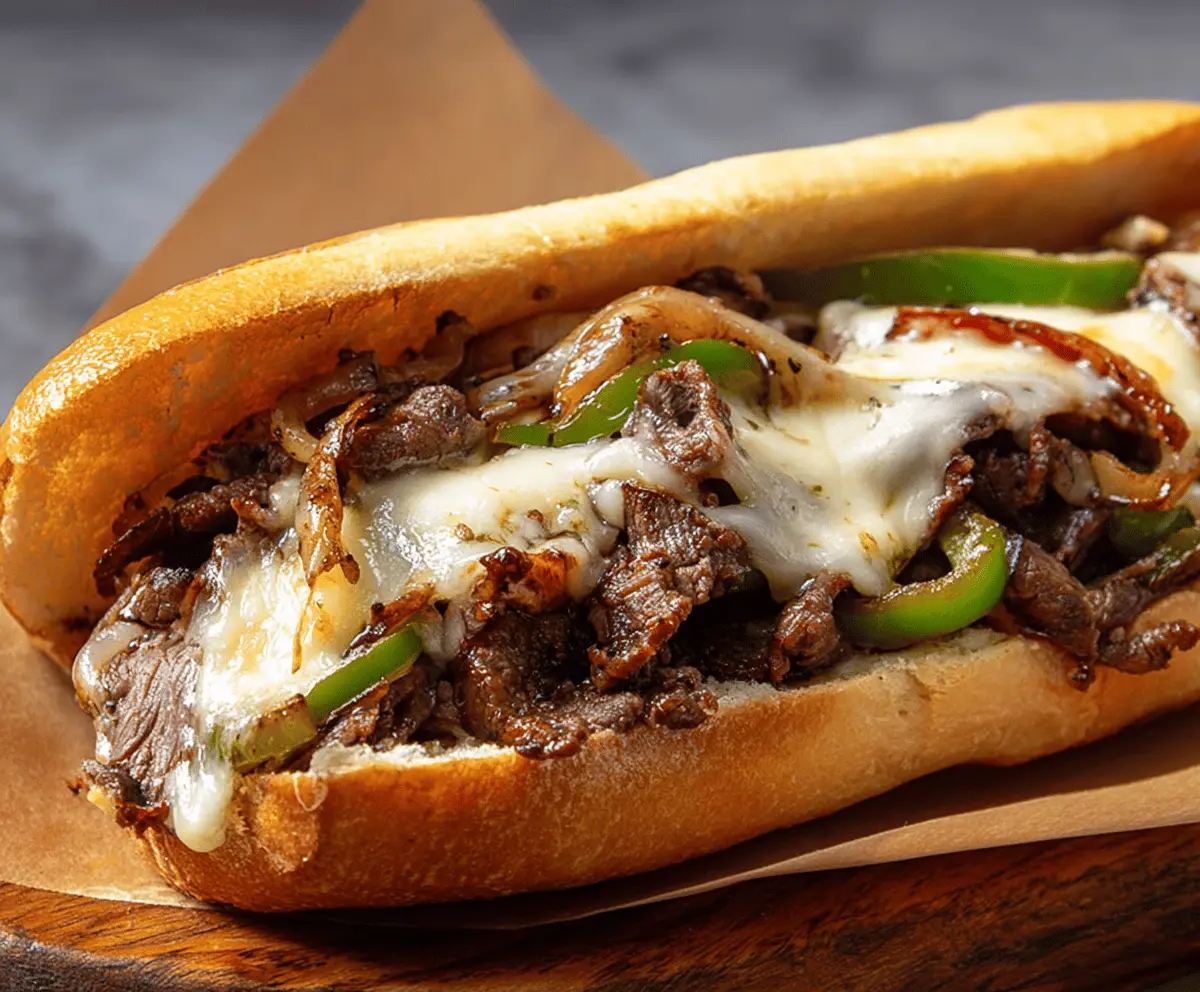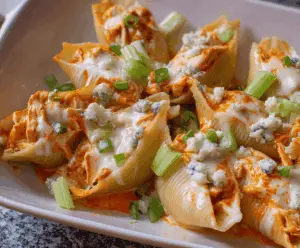The Philly Cheesesteak is a classic sandwich that’s all about tender, thinly sliced steak, melted cheese, and sautéed onions tucked into a soft, fresh hoagie roll. It’s simple but packed with flavor, with that perfect mix of juicy meat and gooey cheese that makes every bite so satisfying.
I love how easy it is to make this at home and still get a taste that feels like you’re right in Philadelphia. One of my favorite tips is to use provolone cheese or even cheese whiz if you want to keep it traditional. Cooking the steak and onions together until they’re caramelized just right always gives me that comforting, restaurant-style vibe that everyone raves about.
For me, the best way to enjoy a Philly Cheesesteak is fresh out of the skillet, paired with some crispy fries or a simple salad. It’s a great meal for a casual lunch or a weekend treat, especially when you want something filling and flavorful without a lot of fuss. It’s one of those sandwiches that’s loved by everyone and makes any day a little better.
Key Ingredients & Substitutions
Ribeye Steak: This cut is tender and flavorful, perfect for slicing thin and cooking fast. If you can’t find ribeye, try sirloin or flank steak. Just slice it thin against the grain for tenderness.
Onions and Bell Peppers: Onions add sweetness when caramelized, while bell peppers give color and crunch. If bell peppers aren’t your thing, you can leave them out or swap for mushrooms.
Cheese: Provolone is classic for a Philly cheesesteak, melting nicely without overpowering. Cheese whiz is another popular option for a creamy texture. Mozzarella works if you want a milder alternative.
Hoagie Rolls: Soft yet sturdy rolls hold everything together. If you can’t find hoagie rolls, Italian sandwich rolls or baguettes work well too. Toasting slightly helps prevent sogginess.
How Do You Get Thin, Tender Steak for the Best Philly Cheesesteak?
The key to a great Philly cheesesteak is thin slices of steak that cook quickly and stay tender. Here are some tips to get it right:
- Partially freeze the steak for 30-40 minutes before slicing; it firms up for easier thin slicing.
- Use a sharp knife to slice against the grain in very thin strips (about 1/8 inch thick).
- Cook the steak on high heat in a single layer. Don’t overcrowd the pan to avoid steaming.
- Stir gently to separate the pieces but avoid overcooking to keep it tender and juicy.
Following these steps makes slicing and cooking much easier, giving you that melt-in-your-mouth steak that makes this sandwich so good.

Equipment You’ll Need
- Large skillet or sauté pan – I like using a big skillet to cook everything evenly and easily toss the ingredients.
- Sharp knife and cutting board – makes slicing the steak and vegetables quick and safe.
- Spatula or tongs – helpful for stirring the meat and veggies and assembling the sandwich.
- Sandwich rolls – soft hoagie or Italian rolls that hold everything together without falling apart.
- Lid or foil – for melting the cheese smoothly over the meat mixture.
Flavor Variations & Add-Ins
- Substitute chicken or thinly sliced roast beef for the steak to change up the protein.
- Use different cheeses like mozzarella, cheddar, or white American for varied flavors.
- Jump in with sautéed mushrooms, banana peppers, or jalapeños for extra flavor and spice.
- Add a splash of Worcestershire sauce or hot sauce to the meat while cooking for a richer taste.
How to Make a Philly Cheesesteak
Ingredients You’ll Need:
For the Sandwich:
- 1 lb ribeye steak, thinly sliced
- 1 large onion, thinly sliced
- ½ each red, yellow, and green bell pepper, thinly sliced
- 4 hoagie rolls or Italian sandwich rolls
- 8 oz provolone cheese, sliced (or cheese whiz if preferred)
- 2 tbsp vegetable oil or olive oil
- Salt and pepper to taste
How Much Time Will You Need?
This recipe takes about 20 minutes total. You’ll spend roughly 10 minutes prepping and slicing ingredients, and 10 minutes cooking and assembling the sandwiches. It’s a quick and tasty meal!
Step-by-Step Instructions:
1. Sauté the Onions and Peppers:
Heat 1 tablespoon of oil in a large skillet over medium-high heat. Add the sliced onions and bell peppers. Cook, stirring occasionally, until they soften and start to caramelize, about 8 to 10 minutes. Once ready, remove them from the skillet and set aside.
2. Cook the Steak:
Turn the heat to high and add the remaining 1 tablespoon of oil to the skillet. Arrange the thinly sliced ribeye steak in a single layer and season with salt and pepper. Cook quickly for 2 to 3 minutes, stirring gently to separate the pieces, until the meat is browned but still tender.
3. Combine Steak and Vegetables:
Return the sautéed onions and peppers to the skillet with the steak. Mix well to combine and warm everything through for about a minute.
4. Melt the Cheese:
Lower the heat to medium-low. Place the sliced provolone cheese evenly over the steak and vegetable mixture. Cover the skillet with a lid or aluminum foil and let the cheese melt for about 2 minutes.
5. Prepare the Rolls:
While the cheese melts, slice the hoagie rolls lengthwise, keeping one side hinged so they open like a book.
6. Assemble and Serve:
Once the cheese has melted, use a spatula to scoop the cheesy steak and vegetable mixture into each roll generously. Serve the sandwiches immediately while hot and enjoy your delicious Philly Cheesesteak!
Can I Use Frozen Steak for Philly Cheesesteak?
Yes, but be sure to fully thaw it in the refrigerator overnight. Pat it dry before slicing to prevent excess moisture, which can affect cooking and texture.
Can I Make Philly Cheesesteak Ahead of Time?
You can prep the sliced steak and vegetables ahead, but it’s best to cook and assemble the sandwich just before serving for the freshest taste and texture.
How Should I Store Leftovers?
Store any leftover steak and veggies separately in airtight containers in the fridge for up to 3 days. Reheat gently in a skillet and then assemble fresh sandwiches.
What is a Good Substitute for Provolone Cheese?
Cheese whiz is a traditional option, or you can use mozzarella or white American cheese for a mild, melty alternative.



